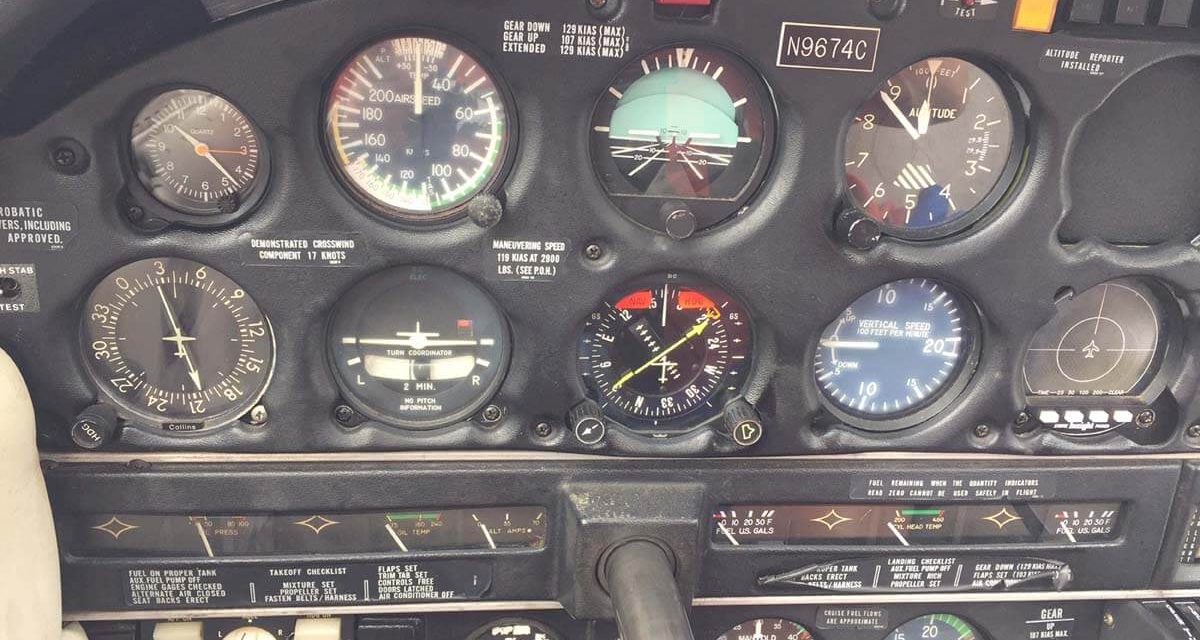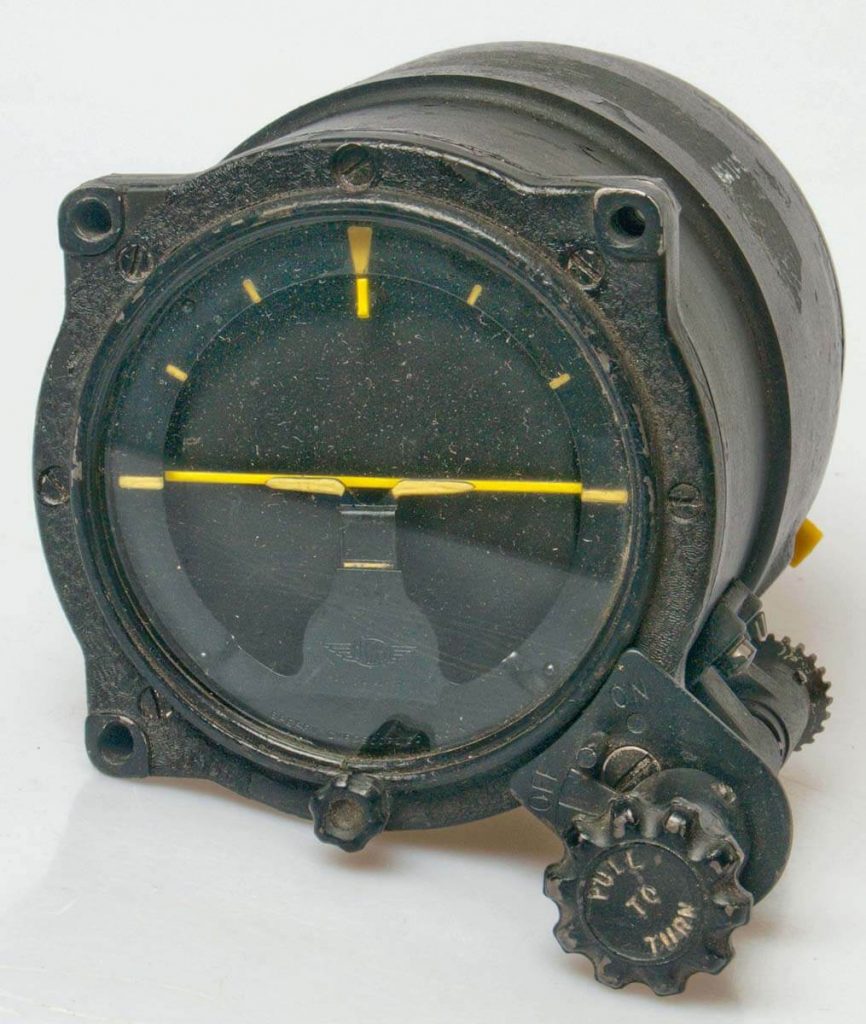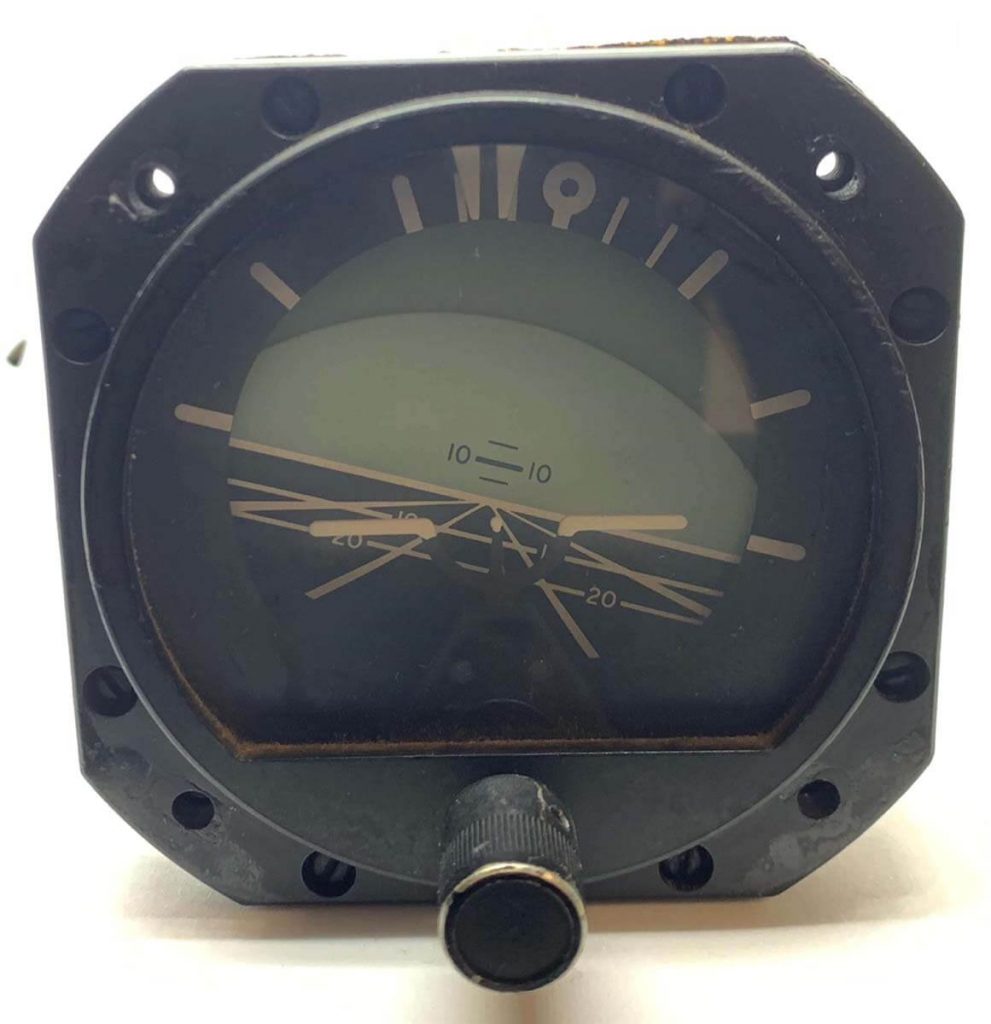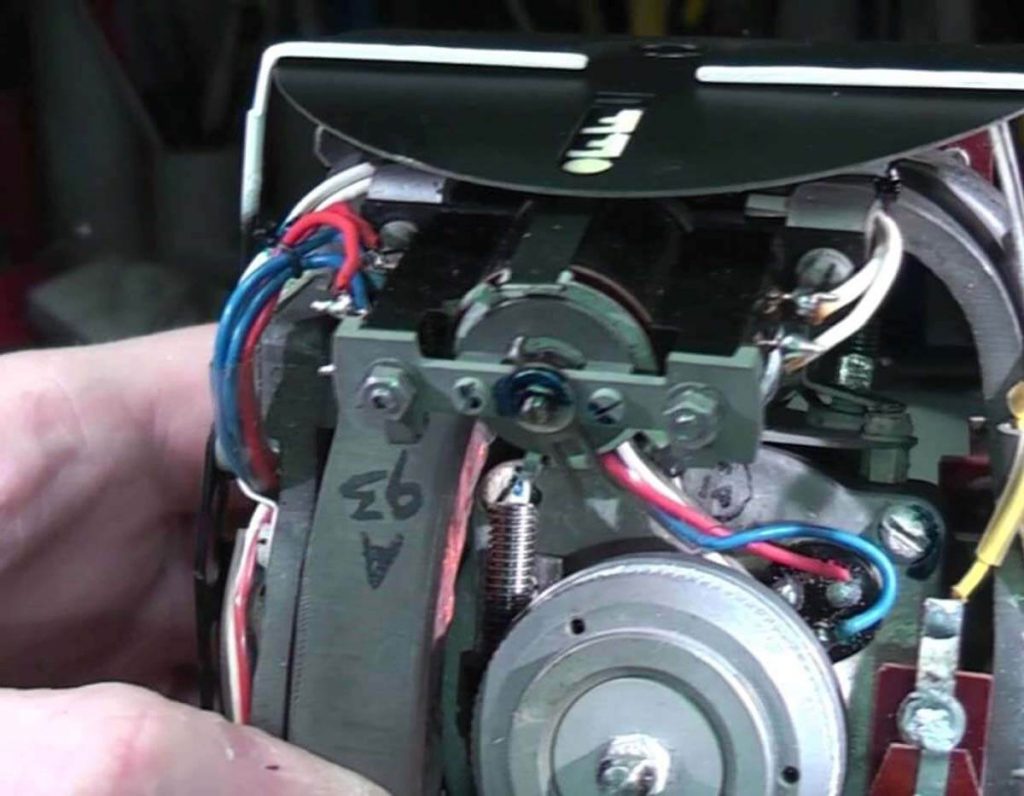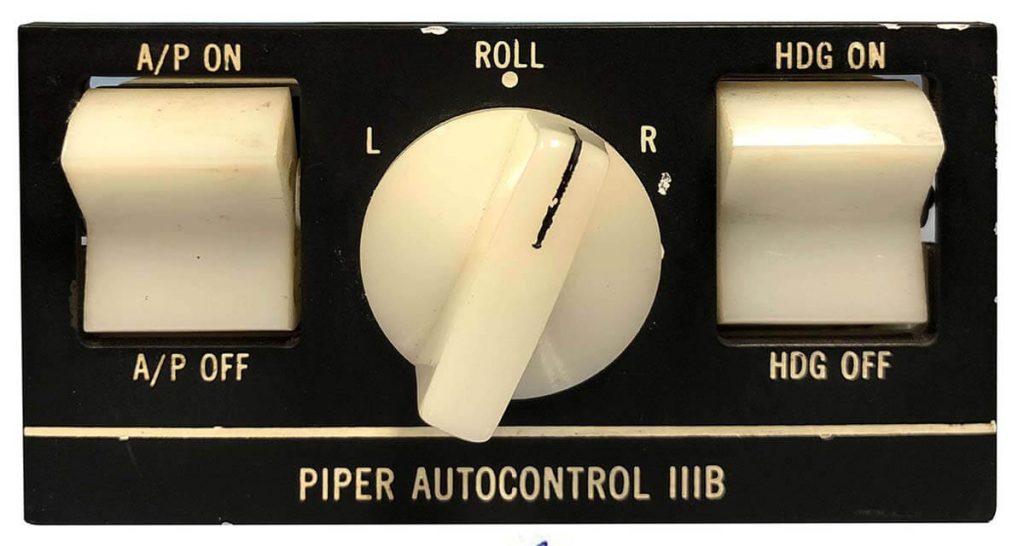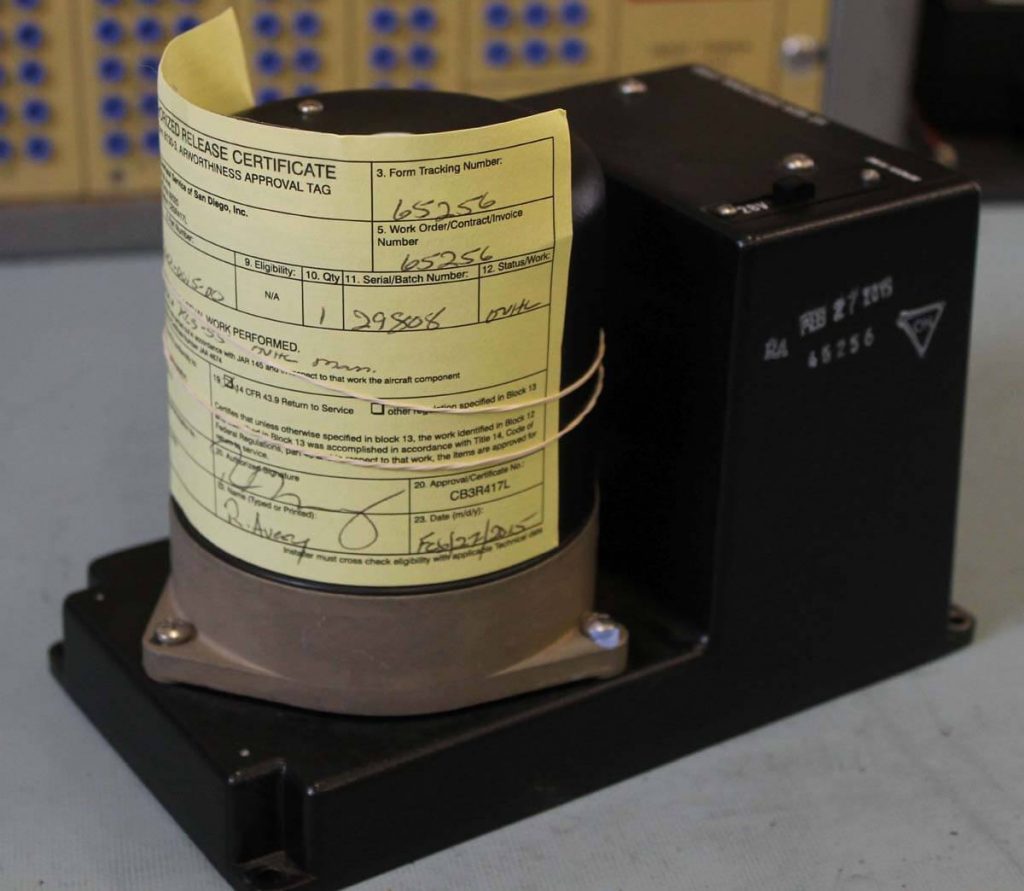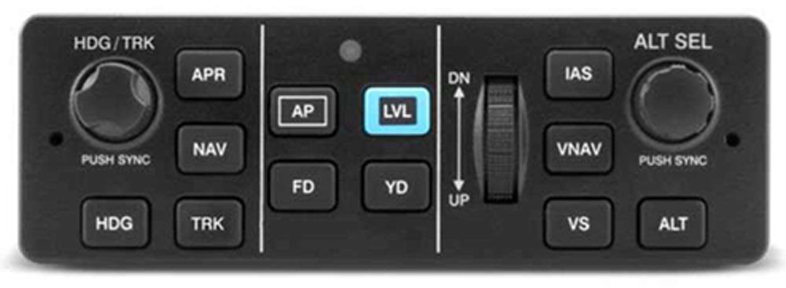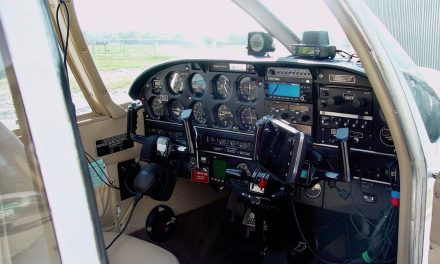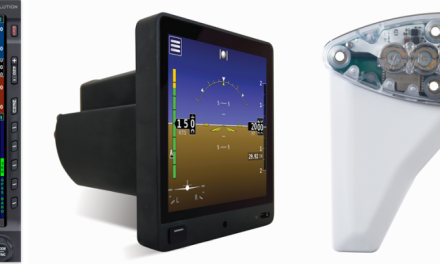We have previously discussed the latest in EFIS technology. No question, this is amazing stuff. However, if you read my Perfect Panel series on VFR, Light IFR, and True IFR in the February, March, and April issues, you should know that there’s a place for this technology.
Read Bob’s article on the uAvionix AV-30.
If you’re flying a Cherokee 140 and your mission is VFR or even light IFR (20% IFR), you shouldn’t, in my opinion, be spending much time here. It’s not a part of a realistic upgrade budget for these airplanes and frankly does little to contribute to this kind of flying. Buyers might get excited when they see dual G5s in your 50-year-old airplane, but they’re not likely ready to pay you extra for something that they will see as frivolous.
Overspend if you want but I’ll bet there are tools in your aircraft that could enhance your capability and safety that need updating first! Certainly safe, reliable nav equipment, more reliable back-up units, better engine information, and an autopilot should take priority over EFIS in these scenarios and buyers will see the benefit in these. So, for those who cannot justify EFIS (or should not), that leaves us with mechanical gyros and a vacuum pump. We’ll talk about these because there is still a large portion of the legacy aircraft owners market that are “stuck” with mechanical gyros.
Read Bob’s article on the Garmin GI 275.
No matter how you fly, even VFR, most owners can get excited about having a reliable autopilot on board. Again, priorities come into play, so finding budget for an autopilot in a $40,000 airplane can be a challenge especially if your panel looks too much like 1970. I’ve had two recent inquiries at AvionixHelp.com from pilots who hoped to find a “cheap” way to add an autopilot. In both cases, I responded to these owners with this statement: “There are lots of ways to affordably upgrade your aircraft panel with quality, reliable used equipment, but the autopilot is not the place to try to do it.” We’ll talk about the concept of installing a used autopilot also. Another client seeking my advice recently asked if he should upgrade his “steam gauges” first. My answer was simple: Depending on how you fly and your plan for the aircraft, updating your steam gauges is almost never a first priority. So, let’s talk about “Old Stuff.”
Mechanical gyros
Before you lament not having the budget or need for EFIS, let me remind you that 5 years ago, you didn’t even know you were missing it. This technology has come a long way in a short time. Going way back, Elmer Sperry started playing with the idea of spinning wheels as early as 1910 and introduced the first turn-and-bank indicator not long afterwards. Interestingly, the thinking back then was to power these devices with something other than electricity therefore providing the benefit whether you had electrical power or not. Thus the vacuum pump and vacuum driven gyro became the standard. Turn-and-banks were originally vacuum also but making these electric provided a balance. As dirty vacuum air — the culprit in mechanical gyros — became suspect, we saw many manufacturers providing electrically driven mechanical options, some with battery back-up, that were more reliable, and the FAA started allowing the swap (it did not prior to 2015) but they were pretty expensive. If you are among the thousands of legacy owners who must depend on mechanical units in IFR, remember we’ve been doing that for 60 years with few issues. Bottom line, you can safely fly — even serious IFR — with a mechanical attitude indicator and directional gyro and a vacuum pump if they are healthy! I’m an avionics guy so other than having six aircraft in the past, four with vacuum pumps (the first two had venturis), I simply trusted my vacuum pump to do its job. I never had a failure or need to replace one and that’s where the knowledge base comes in, so I am lacking in that area.
Vacuum pumps come in wet or dry. Wet systems use engine oil for lubrication but require air/oil separators downstream to remove oil from the air. They last longer but can be messy. Dry vacuum pumps release dust as the vanes wear and the dust serves as the lubricant. The manufacturers recommend the number of hours they should be in service — do not ignore this or be even more conservative if you do a lot of single-engine IFR.
Keep a close eye on the in-line filter because contamination of the air is what causes gyro instruments to fail prematurely. It’s important. Certainly the horizon or attitude indicator is the most critical instrument in the panel if you go anywhere near IFR. Where things get even more complicated is when your position-based autopilot (most Pipers) uses the mechanical AI as the position sensor and depends on a healthy vacuum pump, regulator, clean filter, and healthy AI to keep your wings level.
Vacuum instrument overhaul
Considering the cost to install dual uAvionix AV-30s (about $7,000) or dual Garmin G5s ($7,500-$8,000), maintaining your vacuum system and gyros should be a small fraction of this. I looked at four of the major instrument shops in the U.S. — Castleberry Instruments, Mid-Continent Instruments and Avionics, Pacific Southwest Instruments, and TGH Aviation — to get a handle on current overhaul (OHC) pricing.
This is overhaul/exchange pricing on the most popular mechanical gyros based on what I learned from those shops. They send you an overhauled replacement (usually within a few days), and then you send them back your core. Note that they may charge you the core charge up front (what your core is worth) and refund you the core value once they receive it and confirm that it is rebuildable. So, if you ran it over with your car, get real! This makes sense if you fly frequently. Having your unit overhauled (2-3 weeks) will be a little less. This would be a good thing to do at annual time!
Read Bob’s article on the uAvionix AV-30.
Used autopilots
As I mentioned, I recently had an inquiry from an aircraft owner asking my advice on installing a used autopilot. He flies a Beech Baron B55 and was offered a Century 41 autopilot for $750 that was removed from a B58 Baron. Looks like a deal doesn’t it? I also discovered a member on our forum who was considering installing a used Century IIB in his plane.
He didn’t ask me, but I jumped right in and told him to talk to Century before spending a penny on this concept. He did and abandoned the idea. I did the same. I talked with Scott Collins, head tech guy at Century Flight Systems, and Mike Demeter, an old friend and regional sales manager at Genesys/S-TEC, to find out their companies’ policies on installing a used autopilot. This is what I found.
Century Flights Systems. Century will issue you a new STC specific to your aircraft to install a used autopilot. The price is $3,500 if the autopilot is out of production (as in the IIB) or $1,000 if the autopilot is still being manufactured (as in the Century 41). The STC will be issued to your aircraft and the specific part numbers required will be listed. They did not specify any additional requirements, which concerns me. Servo mounting trays are basic to the install and used ones that have been removed from an airplane are not normally treated with respect and may have an integrity issue. Uninstallers can be hard on wiring harnesses so they may be suspect.
Genesys/S-TEC AeroSystems. S-TEC has a much tougher policy. It requires that the aircraft owner purchase a new installation kit for the autopilot being installed. The kit includes all new bracketing and a new harness and includes the STC but at what price? Fifty percent of the list price of the new autopilot.
For example, if you come across a used System 30 two-axis autopilot (these are hard to find so a typical list price isn’t available), Genesys will sell you the install kit with STC for $8,000. Installation new or used is the same 55-60 hours so about $5,700. You’re at $13,700. Now add what you paid for the System 30 — but wait!
Here’s where the pitfalls come jumping in! Is the autopilot you purchased compatible with your airplane? If it came out of the same make and model, then you may be OK, but go try to find a used System 30 that came out of your 1976 Piper Archer II. Not easy to do, if not impossible. If the aircraft is not from the same make/model, the servo part numbers or even the controller may need to be modified. Are you going to spend $5,000-$6,000 to install parts that are as-removed, as most autopilots will be when removed from another airplane? Wouldn’t you want to have them overhauled first? That’s $1,800 at Genesys and not likely much less at Century. Is the system complete? Remember, the early Century autopilots use the attitude indicator as the position sensor. Is it included and what is the condition of that? That’s a $750 overhaul.
Fact is most aircraft owners looking to consider a used autopilot are very budget conscious and likely to fly light IFR at worst. Bottom line is, you’re not likely to save much money and you end up with yesterday’s technology. Seriously, you cannot beat the value in the BendixKing AeroCruze 100 or the Trio Pro Pilot at under $9,000! So, let’s put the used autopilot concept to bed. In short — forget about it!
“Steam” gauges
I had a potential client recently who was ready to have me help him make upgrade decisions. He was over 80 and flying — in my opinion — a poorly equipped Piper PA-28-235 with older radios equipped only for “old school” IFR. He had 500-feet AGL personal minimums. I never got an avionics list or panel photo so I don’t know all that he had installed. I know he had no GPS and claimed he didn’t need one for the way he flies, and he did have a good autopilot. He had $10,000 to spend. Before I got started, he asked me if replacing his steam gauges should be a priority? I don’t know if he was a reader of my articles and all the talk about the Garmin 275 and uAvionix AV-30 EFIS options got him going on the subject. I am not even sure what he meant by steam gauges and I answered him this way. “Based on your plan for the aircraft and how you fly (the mission), I will establish what you should have in the aircraft to safely fly the mission and what you need to add, in order of priority. Once we have established the priorities, it will be obvious where you need to spend your money first. Frankly, unless you plan to keep the aircraft for a long time and fly medium or harder IFR, replacing steam gauges and mechanical gyros are never a first priority in my opinion!” Turns out, that was all he needed to know and he went on his merry way. Like mechanical gyros, we’ve had fairly good luck with factory-installed instruments. Mechanical rpm meters can be a little off. Consider the Horizon P1000 digital tach if that bothers you. Oil temp gauges are notoriously inaccurate but all in all, they do the job. For VFR and light IFR, they are low on the list of priorities. True IFR? That’s here the new, primary engine management systems come into play, but along with a new panel (that’s usually required to fit a JPI EDM-930 or EI MVP-50P) we have spent the guy above’s budget plus a few thousand more.
Read Bob’s article on the Garmin GI 275.
Conclusion
All pilots would love to have it whether they need it or not but choosing EFIS over something that your panel really needs makes no sense. Mechanical gyros and vacuum pumps are safe if you pay attention to them. Scott Sherer, our aviation director and master pilot, had a good suggestion: If the lenses in your gyros are starting to get smokey, you have got a contamination problem so do not ignore that! Sorry, but there’s no way to install a cheap autopilot.
However, a new two-axis Trio or BendixKing autopilot is a heck of a deal compared to 5 years ago and would have been considered cheap! The rest of your steam gauges should not be much of a concern and are almost never a major concern! Having a good “instrument scan” also means paying attention to their condition. Until next time … happy and safe flying!

